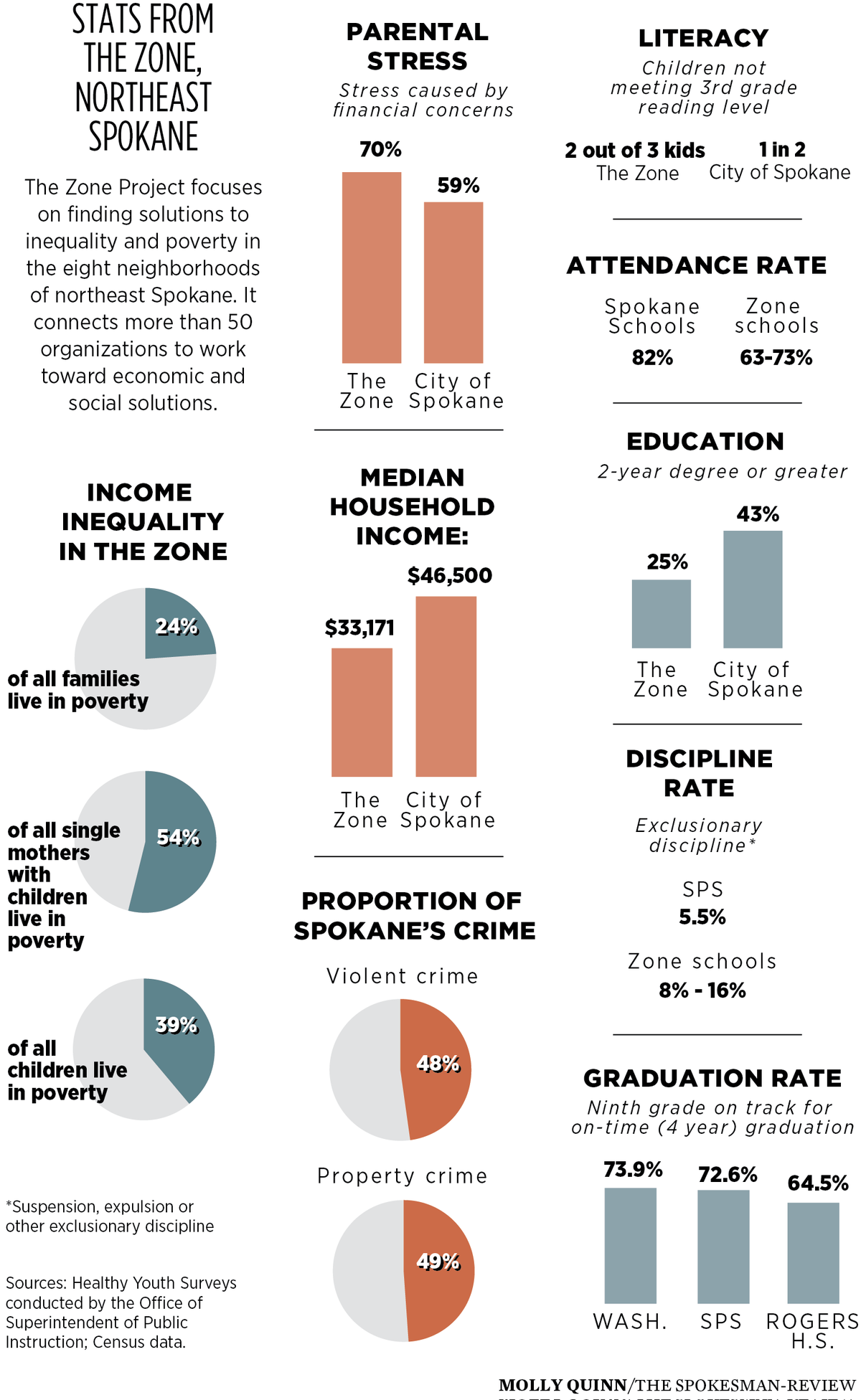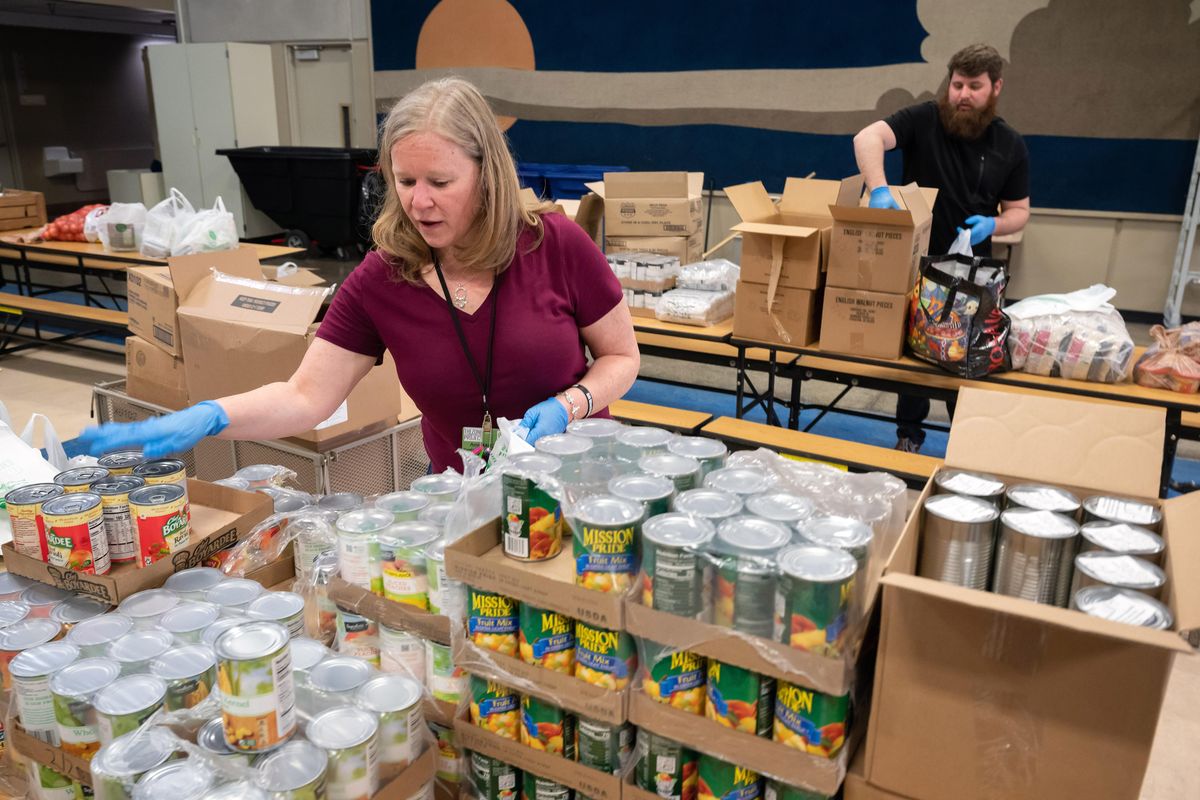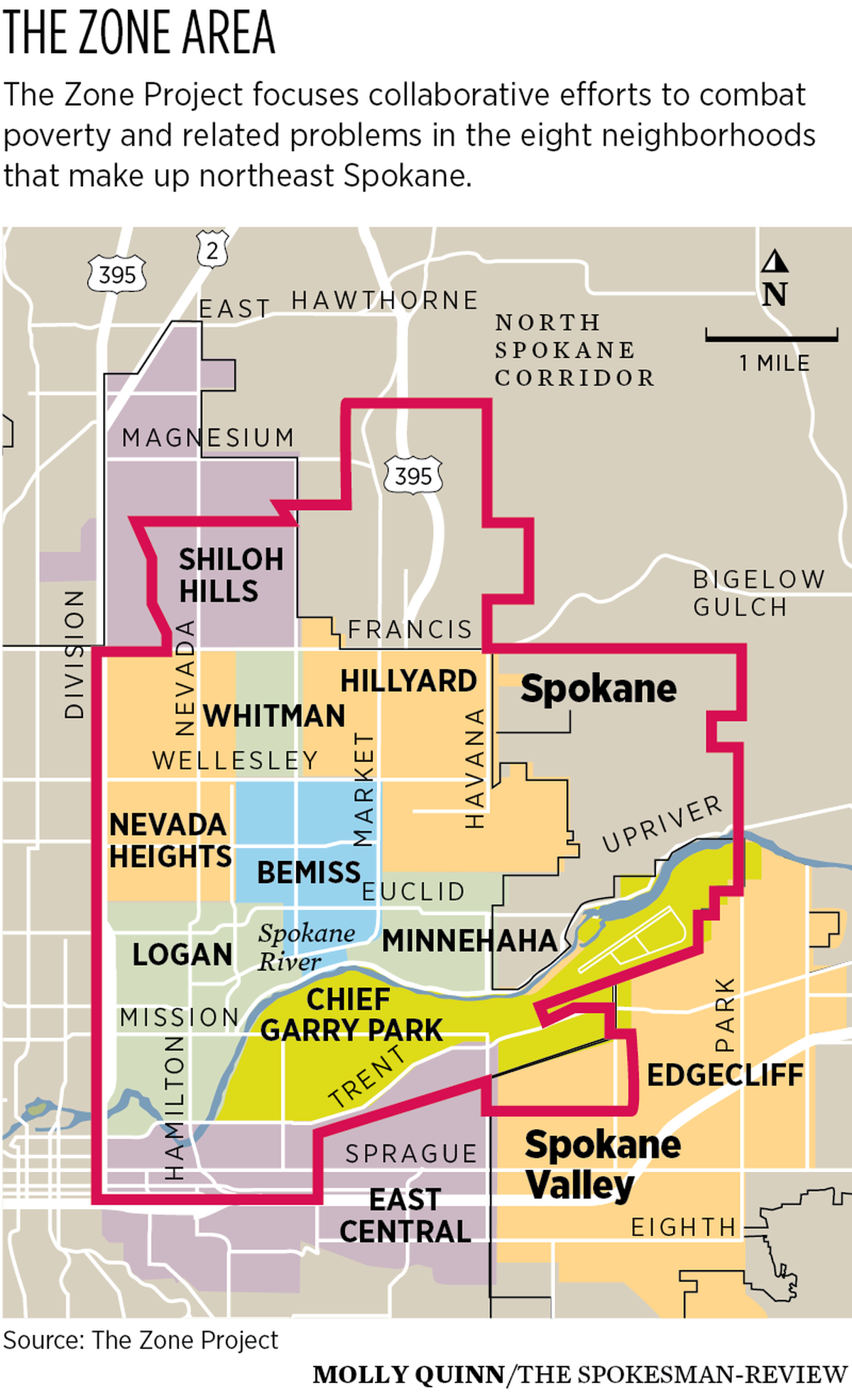This column reflects the opinion of the writer. Learn about the differences between a news story and an opinion column.
Shawn Vestal: An existing force for good in northeast Spokane becomes a coronavirus lifeline
Family resource coordinators with The Zone Project, Amy McColm and Nathan Hamilton, sort donated food to be distributed to families on April 10 at Bemiss Elementary School. (Colin Mulvany / The Spokesman-Review)Buy a print of this photo
Masked and with a pocket Purell at the ready, Amy McColm was searching for the salt.
Her cart was filled with shampoo and tortillas and dry beans and sugar, and she’d almost completed her list. But the salt, on Tuesday afternoon at the Safeway store at Mission Avenue and Hamilton Street, was proving to be elusive.
“I’m single and I don’t ordinarily do a lot of shopping,” McColm said. “Now here I am doing all of the shopping.”
McColm is a family resource coordinator assigned to Lidgerwood Elementary for The Zone Project. She’s also just someone who, when hearing that a family needs food, works whatever angle she can to get it to them.
In her job with The Zone Project – which develops collaborative efforts to combat economic, educational and social inequality in northeast Spokane – she typically works with school officials to identify ways to assist families and students, from developing a walking school bus program to helping get kids to class on time to hosting events designed to strengthen parental engagement.
But in these stay-home days, her focus has been almost entirely on food. Finding out who needs it. Finding out who has it to share. Delivering it to the homes of the residents of northeast Spokane, a quadrant where hunger is a pressing reality in the best of times. She’s particularly trying to make sure immigrant and refugee families are getting the food they need.
She, and the other seven family resource coordinators stationed at northeast schools, are all targeting hunger in the neighborhood right now, by staying in touch with the people who see it the most: teachers.
“Teachers know families,” said McColm, who also works with Stand for Children and the NAACP. “That’s a big way I find need, is teachers saying, ‘I was talking to families and here are some people who need food.’ ”
These relationships form the core of The Zone Project, a collaborative effort formed in 2015; it has created a network of more than 50 organizations to attack poverty-related issues in the eight neighborhoods that form the northeast quarter of the city. Among its efforts are a mobile food bus, summer learning and activity programs, and a mentoring program, among other things.
The Zone network, centered in the district’s schools around the efforts of people like McColm, was well-suited to become a responsive lifeline for those in need during a crisis.
“Because of the capacity we have built and relationships, I would say we are the most organized area of Spokane County and we are already delivering hundreds if not thousands of pounds of food weekly to families, along with toiletries and other necessities,” former City Councilwoman Amber Waldref wrote in an email recently.
The coronavirus is exposing fault lines of inequality in the community – divisions that have long been there, but which have been exacerbated by the pandemic. The challenges facing residents in northeast Spokane did not begin with this virus and won’t end when it goes away.
A quarter of families, and 4 of every 10 kids, in the area live in poverty. The median household income is 29% lower than the city at large. The average level educational achievement is lower than the rest of the city, and almost half of the city’s violent crime and property crimes occur in this part of town.
The Zone Project has been targeting these problems for several years now, following a place-based model derived from the Harlem’s Children’s Zone. The Zone is defined as the eight neighborhoods that feed Shaw and Garry middle schools.
The project helps connect businesses, charities, volunteers, donors and others to focus on families, and the drivers of intergenerational poverty and well-being. Four teams focus on the key current priorities: expanding access to afterschool and summer learning opportunities; increasing opportunities for job training coupled with child care; expanding access to healthy food; and building a stronger sense of belonging and social connection among residents.
“Our whole lens is on families with children in the household,” Waldref said.
In recent weeks, the project has worked with Second Harvest food bank to get staple foods for delivery to families, and with Sodexo at Gonzaga to prepare hot meals for delivery. It is helping to develop activities for shut-in families, many of whom may have little or no access to the internet. It’s having regular conversations intended to identify the needs and the capacity to fill them, and develop a strategy for a quick response.
“It’s really just brokering relationships among schools and neighborhoods and organizations,” Waldref said. “I’m hoping the silver lining will be our community will have a better understanding of the structural problems and how difficult it is for families to access basic needs.”
Meanwhile, at the northeast Safeway, McColm eventually found the salt, of course. She checked out, and loaded her car for delivery, while discussing the ways her job has changed.
Many organizations and individuals have stepped forward to help make sure people are fed during this crisis. And still, there are gaps. Last week, McColm and her fellow family resource coordinator Nathan Hamilton coordinated a delivery of food from a neighborhood church to Bemiss Elementary, which was then distributed to families to cover weekend meals.
On Tuesday, she was helping deliver necessities to a couple of families she’d heard about through her contacts. It was actually a delivery she was coordinating on her own, outside of her Zone work.
“We were always doing good stuff, but now the good stuff we’re doing is essential good stuff,” she said. “It’s ‘Where is the need? Here I come.’ ”




